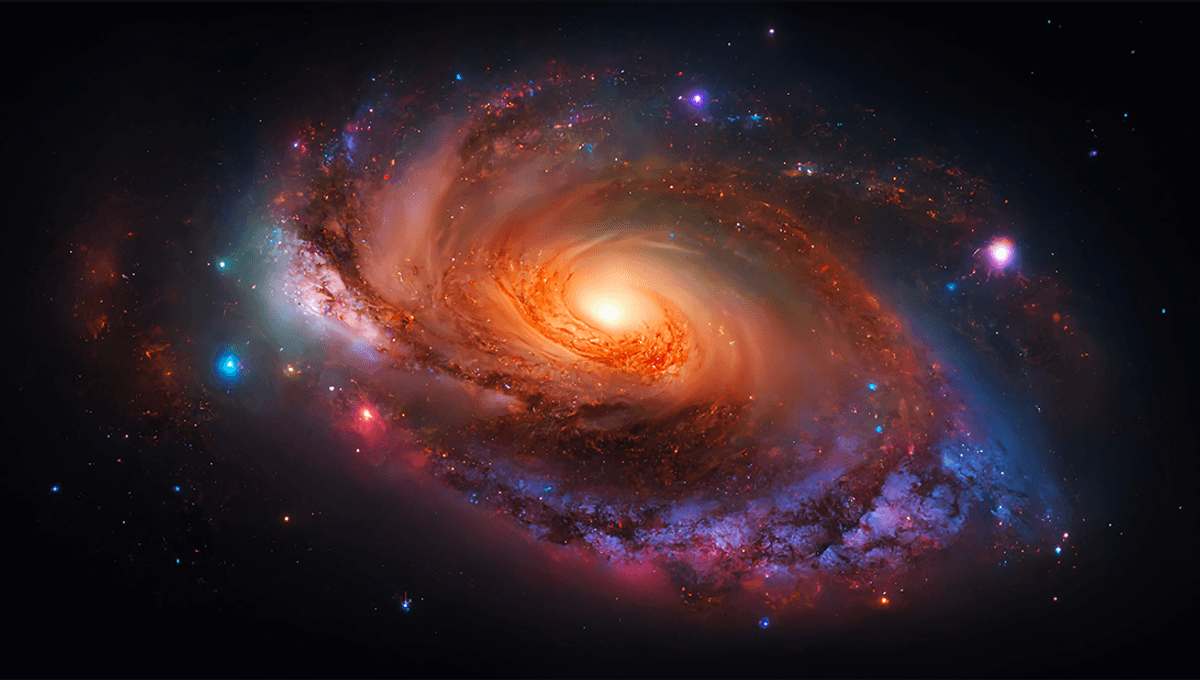
A new study has looked into the so-called “red sky paradox” and the puzzling observation that intelligent life has sprung up on Earth so early in the Stelliferous Era of the universe. Analyzing the problems using Bayesian statistics, the suggested solutions are not pretty.
The only intelligent life we have observed lives around a G-type main sequence star, sometimes referred to as a yellow dwarf, or just “the Sun”. This shouldn’t be too surprising. We are around a star that is right for the conditions for life. If these conditions weren’t present, we wouldn’t be here to observe their inadequacy.
But our star is far from the most abundant type in the cosmos. M-dwarfs are far more abundant, representing around 60-70 percent of the stars in our own galaxy, assumed to be broadly similar across the cosmos. This presents what David Kipping, associate professor of astronomy at Columbia University, calls the “red sky paradox”.
“Most stars in the universe are red dwarfs. They outnumber stars like our Sun by a factor of 5 and outlive them by another factor of 20 (population-weighted mean),” Kipping explained in a 2021 paper. “When combined with recent observations uncovering an abundance of temperate, rocky planets around these diminutive stars, we are faced with an apparent logical contradiction – why do we not see a red dwarf in our sky?”
“As a general principle of statistics, a random sample drawn from some unknown distribution is unlikely to be a tail-end outlier,” Kipping explains in his new paper, which has not yet been peer reviewed. “This reasoning informs the Copernican Principle, which argues that amongst all observers, our experience is not privileged and should thus be a representative sample; an idea which has become a cornerstone of modern cosmology.”
And yet here we are around a yellow (well, green) star. Weirder still, the current star-forming “Stelliferous Period” of the universe is projected to continue for around 10 trillion years. So why are we here in the first 0.1 percent of that time, if we assume we are typical observers?
There are a few suggestions for why this is the case, which Kipping analyzed using a Bayesian model.
One suggestion is that stars below a certain mass simply do not produce observers, dubbed the “desolate M-dwarf hypothesis”. Another, called the “truncated window hypothesis”, suggests that the time window for observers can be cut short by planetary-scale problems. A third suggests that it is merely luck.
Using Bayesian analysis, Kipping largely dismisses the luck option, with a “Bayes factor of ∼1600”.
“That is huge. Usually we would say that anything above 10 to one is classified as strong evidence and anything above 100 to one is typically called decisive evidence,” Kipping explained in an accompanying Cool Worlds video. “We literally don’t have words to describe numbers which are higher than 100 to one. So at 1,600 to one, we really just don’t have a leg to stand on.”
Another idea, that the universe’s observers are wiped out by some huge cataclysmic event – such as false vacuum decay, or “grabby aliens” – was suggested by Kipping. However, this was found to be statistically more unlikely than the other available explanations.
“Two plausible explanations remain: M-dwarfs do not develop observers and the window for observers is truncated to some maximum timescale,” Kipping explains in his discussion. “We have found that the latter is untenable in isolation, rejected at a Bayes factor of ∼33, although it may contribute in collaboration with the desolate M-dwarf hypothesis.”
The model favored by Kipping, in which habitable lifetimes of planets are set to 10 billion years, unfortunately rules out “all stars with masses below 0.34 [solar masses] as developing observers to 95.45 percent confidence – a cutoff which kills some two-thirds of all stars in the universe.”
In other words, stars with a mass around a third of our Sun’s are unlikely to produce observers. According to this model, though there is some wriggle room, the universe could be pretty desolate.
“I think that the solution presented that low mass stars do not develop observers provides by far the best explanation as to our existence,” Kipping says in the video, adding that life may still be possible around these lower-mass stars, even if intelligent observers do not emerge. They could, of course, become colonized, as intelligent species expand through the cosmos.
“But barring interstellar colonization, M-dwarfs should be very quiet places. That’s my best bet. I think it is rigorously the most likely position based on the available data.”
The study is posted to preprint server arXiv.
Source Link: The Universe’s “Red Sky Paradox” Just Got Darker: Most Stars Might Never Host Observers